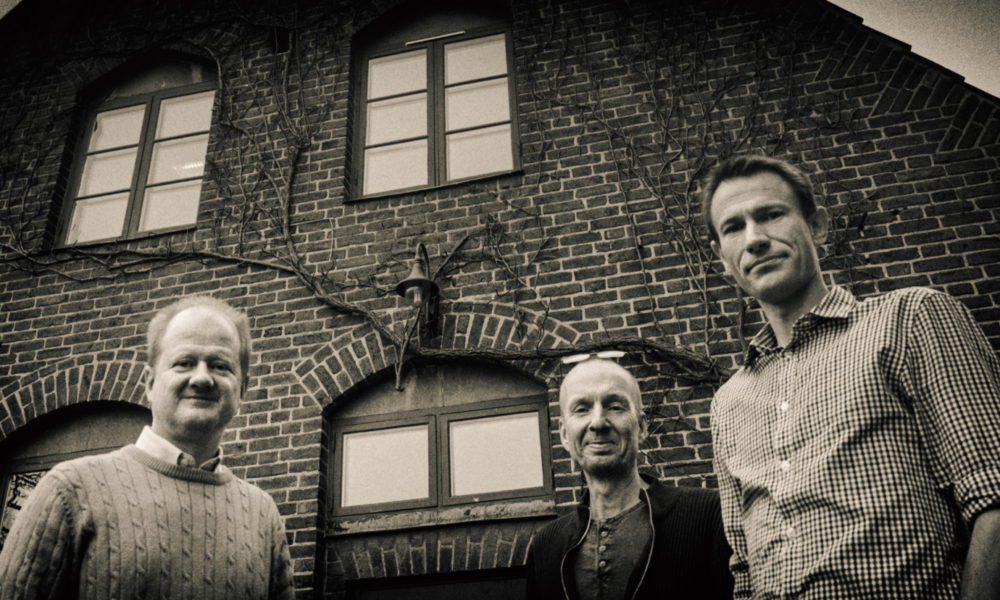GIS – a pre-requisite in digitalised society
A smart society is starting to emerge around us with new interconnecting requirements for our use of resources not to compromise sustainability in ecosystems.
Nowadays, Geographical Information Systems (GIS) are an obvious tool within widely diverging fields, such as urban planning, prospecting, research, mapping, etc. Historically, GIS has been associated with maps, but it is so much more than that. GIS is like a whole arsenal of tools.
What demands will the modern cities of the future place on the development of maps and tools? The digitisation of maps has opened up completely new opportunities, to the extent that today it is difficult to see where the limits might be. What would a modern community be like without the opportunities offered by GIS?
“The map itself, which is the basis of GIS, has long played an important role as a basis for decision-making”, says Petter Pilesjö, professor and director of the GIS Centre at Lund University. “But the demands made on maps have changed abreast of technological developments. Currently, there is much discussion about smart cities and how they could support sustainable development, greater integration and better infrastructure. This makes different demands on the maps, as well as on the tools and underlying data.”
” But the demands made on maps have changed abreast of technological developments.”
Currently, several national investments are underway to create an infrastructure for the smart cities of the future. One of the objectives is to enable all the stakeholders involved in community planning to share data in a better way. Today, the situation is fragmented, as even data of central importance such as planning, projecting, construction and maintenance of buildings and infrastructure is not shared in a good way between those involved. For this to function, new information models are required along with more developed technical systems, a change in legislation and, not least, new business models.
“Somewhat simplified, one can visualise the goal as a coherent digital representation of both the interior and exterior environment”, says Lars Harrie, associate professor and researcher at the GIS centre. “Creating such a representation is interesting not only to stakeholders within community development; it also opens up new opportunities for applications within the fields of environment and energy, navigation, traffic control, etc. In a smart city, many functions and processes are integrated and connected.”
Digital maps have traditionally been analysed and visualised in geographical information systems (GIS). As map information has been applied in more and more fields, collaboration between GIS programs and other analysis software has increased.
The GIS centre at Lund University is currently both a centre for research and education and a source of support and help for organisations beyond the University. Several research projects deal with water management in various forms.
“The importance of water for the functioning of cities is steadily growing. This applies both to water brought in for drinking purposes and to water that arrives naturally as rain, snow or meltwater – water which is sometimes unpredictable and can come in large quantities”, comments Andreas Persson, researcher at the GIS centre.
The researchers at the GIS centre map the people, services and functions which would be involved in a flood, both as victims but also as professionals dealing with the problems that arise.
“In the project, key players are interviewed and their networks mapped by colleagues at the Division of Risk Management and Societal Safety at the Faculty of Engineering”, says Petter Pilesjö. “This data is then tested against the physical locations for flooding. Within municipalities, people are relatively well informed as to where and to whom they should turn, but when it comes to events between municipalities, things don’t function as smoothly today.”
Many municipalities lack a functioning infrastructure. As water does not recognise municipal boundaries, a downpour, discharge or other form of problem in a waterway in a community upstream can have a major impact on communities downstream, so it is important that municipalities cooperate across boundaries.
The researchers in Lund are also working with hydrological modelling.
“There is a lot of talk nowadays about the changing climate which, in certain places, brings worse and reduced access to water and, in other places, increased access to water”, explains Andreas Persson. “In order to predict and ensure access to water in all areas, researchers are working on the development of hydrological models. This is done in a GIS environment that enables the water across the area to be described and modelled.”
With these tools, it is possible to obtain a detailed picture of the water’s extension in the area, but also the amount of water over time, for example through different seasons.
Previous GIS models of how water spreads through a landscape only used topographical data. The models were also based on all ground being concrete, where water runs over the surface and none can sink into the ground.
The new model includes infiltration into the ground, as well as different types of soil, which affect the speed of the water.
The new model also includes buildings and distinguishes between hard surfaces such as roads, and green areas like parks.
This model allows a very accurate assessment of how much water is present in a specific location, right down to the square metre, and at each point in time during and after a downpour.
“This makes it possible to see which areas or buildings in a city are most vulnerable and at which point of a downpour”, says Andreas Persson. “Urban planners get a tool with which to build in solutions capable of dealing with water so as to avoid flooding.”
So-called green solutions can be created, in the form of parks with bodies of water that have a dual function. Green indicates parks and green corridors, and blue means streams and ponds in the area. The blue-green solutions can thus become an integrated part of the urban environment, while being sized to absorb large amounts of water in case of a downpour, for example.
Text: Peter Frodin
Photo: Peter Frodin
Facts
-
Lunds University’s GIS centre
-
Lunds University’s GIS centre was set up in 1993 and is an organisation for collaboration between departments and between teaching staff and researchers at the University who work in the field of GIS. The main task of the specialised centre is to disseminate the use of geographical information systems within the University. The demand for digital GIS and mapping services is high and expected to increase further. This means that the nature of the work within the GIS centre has gradually changed from being general information to direct application support.






